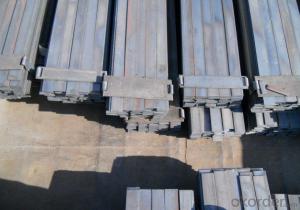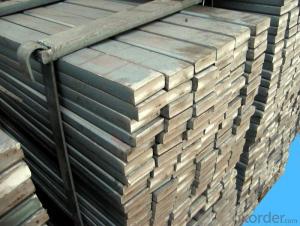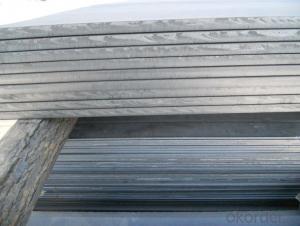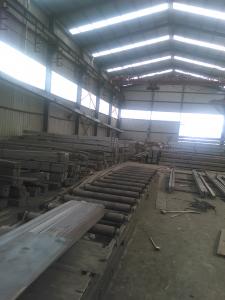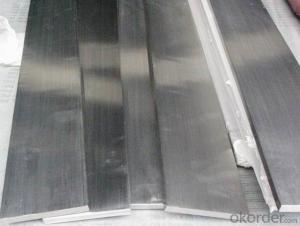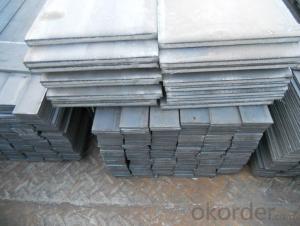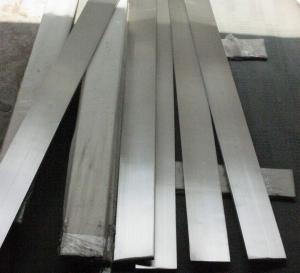Slit Cutting Flat Bar in Material Grade Q235B Steel Flat Bars
- Loading Port:
- Tianjin
- Payment Terms:
- TT or LC
- Min Order Qty:
- 25 m.t
- Supply Capability:
- 10000 m.t/month
OKorder Service Pledge
OKorder Financial Service
You Might Also Like
OKorder is offering high quality Slit Cutting Flat Bar at great prices with worldwide shipping. Our supplier is a world-class manufacturer of steel, with our products utilized the world over. OKorder annually supplies products to European, North American and Asian markets. We provide quotations within 24 hours of receiving an inquiry and guarantee competitive prices.
Product Applications:
Slit Cutting Flat Bars are ideal for structural applications and are widely used in the construction of buildings and bridges, and the manufacturing, petrochemical, and transportation industries.
Product Advantages:
OKorder's Slit Cutting Flats Barare durable, strong, and resist corrosion.
Main Product Features:
· Premium quality
· Prompt delivery & seaworthy packing (30 days after receiving deposit)
· Corrosion resistance
· Can be recycled and reused
· Mill test certification
· Professional Service
· Competitive pricing
Product Specifications:
Manufacture: Slit Cutting
Grade: Q195 – 235
Certificates: ISO, SGS, BV, CIQ
Length: 6m – 12m, as per customer request
Packaging: Export packing, nude packing, bundled
Chemical composition of Q235
Alloy No | Grade | Element(%) | ||||
C | Mn | S | P | Si | ||
Q235 | B | 0.12-0.20 | 0.3-0.7 | ≤0.045 | ≤0.045 | ≤0.3 |
Physical properties of Q235
Alloy No | Grade | Yielding strength point(Mpa) | Tensile strength (Mpa) | Elongation after fracture(%) | ||||||
Thickness (mm) | Thickness (mm) | |||||||||
≤16 | >16--40 | >40--60 | >60--100 | ≤16 | >16--40 | >40--60 | >60--100 | |||
≥ | ≥ | |||||||||
Q235 |
B |
235 |
225 |
215 |
205 |
375--500 |
26 |
25 |
24 |
23 |
Images:
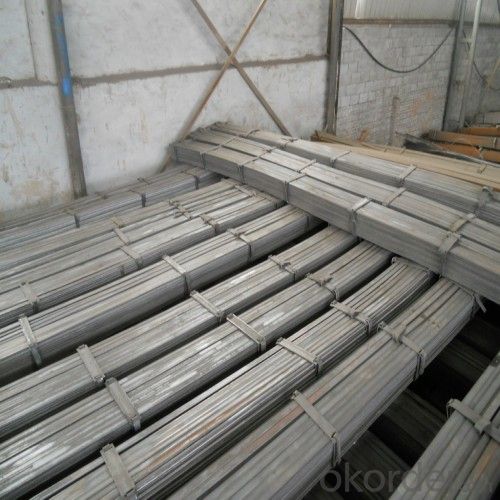
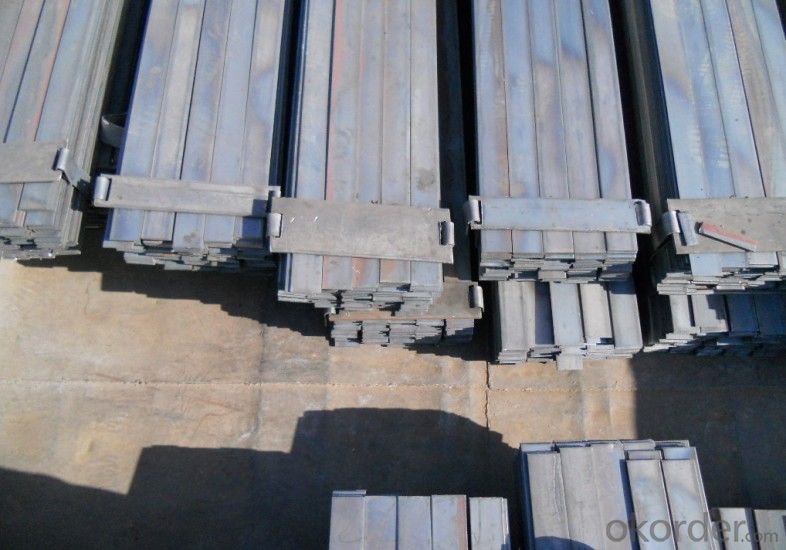
- Q:What are the different types of surface defects that can be found in steel flat bars?
- Some common types of surface defects found in steel flat bars are scratches, pits, scale, cracks, and rust.
- Q:What are the different techniques for joining steel flat bars together?
- There exists a variety of methods for connecting steel flat bars, which depend on specific needs and uses. Some commonly employed techniques include welding, bolting, riveting, and adhesive bonding. 1. Welding is extensively utilized for joining steel flat bars. It involves heating and melting the edges of the flat bars in order to fuse them together. The selection of welding method, such as arc welding, gas welding, or laser welding, depends on the thickness and composition of the steel bars. 2. Bolting is an effective means of connecting steel flat bars, particularly when disassembly is required. This technique involves drilling holes in the flat bars and securing them together using bolts, nuts, and washers. Bolting provides a robust and dependable connection but may require periodic maintenance to prevent loosening. 3. Riveting entails driving a metal pin or rivet through pre-drilled holes in the steel flat bars. The rivet is then deformed on the opposite side, creating a permanent connection. Riveting is commonly employed in structural applications that demand high strength and rigidity. 4. Adhesive bonding involves applying a strong adhesive between the surfaces of the steel flat bars to create a bond. This technique is suitable for connecting thin flat bars or situations where welding or drilling is not feasible. Adhesive bonding results in a clean and aesthetically pleasing joint, but it may have limitations in terms of strength and durability. 5. Mechanical fasteners, such as clips, clamps, or brackets, can also be used to connect steel flat bars. These fasteners are designed to hold the flat bars in place without the need for welding or drilling. While mechanical fasteners offer ease of installation and disassembly, they may not provide the same level of strength as welding or riveting. It is crucial to carefully select the appropriate joining technique based on factors such as the intended use, load requirements, design limitations, and the properties of the steel flat bars.
- Q:Are steel flat bars suitable for machine parts?
- Yes, steel flat bars are suitable for machine parts. Steel flat bars are known for their strength, durability, and versatility, making them an ideal choice for various machine parts. They can withstand high loads, provide stability, and are easily machinable, making them suitable for a wide range of applications in different industries.
- Q:The total floor distribution along the wall surface 40x4 galvanized flat steel, flat paint is painted yellow mark or brush a straight chute
- Mainly to use insulating coatings.
- Q:Can steel flat bars be used in high-temperature environments?
- Yes, steel flat bars can be used in high-temperature environments, but the specific type of steel used will determine its suitability. Stainless steel flat bars, for example, are often used in high-temperature applications due to their ability to resist corrosion and maintain their strength at elevated temperatures. Certain grades of stainless steel, such as 304 and 316, can withstand temperatures up to 870°C (1600°F) and 925°C (1700°F), respectively. Additionally, heat-resistant alloys like Inconel and Hastelloy are commonly used for high-temperature applications as they can maintain their mechanical properties even at extremely high temperatures. However, it is important to consider the specific temperature range, duration of exposure, and the potential for other factors like oxidizing or reducing atmospheres that may affect the performance of steel flat bars in high-temperature environments. Therefore, it is crucial to consult with materials engineers or experts to determine the best steel flat bar for a specific high-temperature application.
- Q:Can steel flat bars be heat treated for increased strength?
- Steel flat bars have the ability to undergo heat treatment for the purpose of enhancing their strength. Heat treatment involves subjecting the steel to a specific temperature, maintaining it at that temperature for a specific duration, and then carefully cooling it. This process results in changes to the steel's microstructure, leading to improved mechanical properties, such as increased strength. The choice of heat treatment method depends on the desired strength and other required properties for the specific application of the steel flat bars. Common heat treatment techniques for steel encompass annealing, quenching, tempering, and normalizing. It is crucial to seek guidance from a metallurgical engineer or expert to determine the most suitable heat treatment approach for achieving the desired strength enhancement in steel flat bars.
- Q:How do you prevent steel flat bars from scratching or damaging surfaces?
- One way to prevent steel flat bars from scratching or damaging surfaces is by applying a protective covering or padding to the areas in contact with the bars. This can be done using materials such as felt, rubber, or foam. Additionally, using a lifting device or handling the bars with care can help minimize the risk of scratching or damaging surfaces.
- Q:Can steel flat bars be used for making brackets or supports for telecommunications equipment?
- Yes, steel flat bars can be used for making brackets or supports for telecommunications equipment. Steel is a strong and durable material that provides the necessary structural support for holding and securing telecommunications equipment in place. Its versatility and availability in various sizes make it suitable for constructing brackets and supports to meet the specific requirements of telecommunications installations.
- Q:Can steel flat bars be used for making storage cabinets?
- Yes, steel flat bars can be used for making storage cabinets. Steel flat bars are sturdy and durable, making them suitable for constructing storage cabinets that can withstand heavy loads. They offer excellent structural integrity and can be easily welded or bolted together to create a stable and secure storage solution. Additionally, steel flat bars are resistant to rust and corrosion, ensuring the longevity of the storage cabinets. Therefore, using steel flat bars for making storage cabinets is a practical choice that can provide strength, durability, and a professional appearance.
- Q:Please: hot galvanized flat steel and copper clad steel ground!
- Copper layer adhesion is high: because the copper layer and the surface of the steel is the combination of molecules, so the degree of adhesion is high, in the stranding of synthetic strands, the copper layer will not be damaged, there will be no separation, skin cracking and cracking.
1. Manufacturer Overview |
|
|---|---|
| Location | |
| Year Established | |
| Annual Output Value | |
| Main Markets | |
| Company Certifications | |
2. Manufacturer Certificates |
|
|---|---|
| a) Certification Name | |
| Range | |
| Reference | |
| Validity Period | |
3. Manufacturer Capability |
|
|---|---|
| a)Trade Capacity | |
| Nearest Port | |
| Export Percentage | |
| No.of Employees in Trade Department | |
| Language Spoken: | |
| b)Factory Information | |
| Factory Size: | |
| No. of Production Lines | |
| Contract Manufacturing | |
| Product Price Range | |
Send your message to us
Slit Cutting Flat Bar in Material Grade Q235B Steel Flat Bars
- Loading Port:
- Tianjin
- Payment Terms:
- TT or LC
- Min Order Qty:
- 25 m.t
- Supply Capability:
- 10000 m.t/month
OKorder Service Pledge
OKorder Financial Service
Similar products
New products
Hot products
Related keywords

